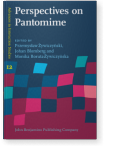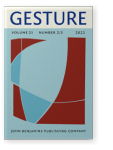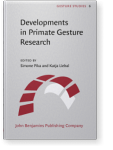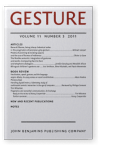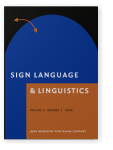Paula Marentette
List of John Benjamins publications for which Paula Marentette plays a role.
Articles
2024 Chapter 8. Symbolic distancing in three-year-old children’s object-use pantomime Perspectives on Pantomime, Żywiczyński, Przemysław, Johan Blomberg and Monika Boruta-Żywiczyńska (eds.), pp. 188–216 | Chapter
Children’s early pantomime of how to use objects is thought to demonstrate “symbolic distancing,” ostensibly providing an opportunity to observe the development of symbolic reference between the ages of three- and six-years. This chapter argues, in contrast, that the modes of representation used… read more
2022 Co-speech gestures can interfere with learning foreign language words Gesture 21:2/3, pp. 239–263 | Article
Co-speech gestures can help the learning, processing, and memory of words and concepts, particularly motoric and spatial concepts such as verbs. The purpose of the present studies was to test whether co-speech gestures support the learning of words through gist traces of movement. We asked… read more
2012 Does ontogenetic ritualization explain early communicative gestures in human infants? Developments in Primate Gesture Research, Pika, Simone and Katja Liebal (eds.), pp. 33–54 | Article
This chapter evaluates predictions that the origins of at least some gestures of human infants are shaped through ontogenetic ritualization (Clark 1978; Lock 1978; Tomasello 2008). To do so, we examine the development of five gesture types in four children between the ages of 6.5 and 11.5 months.… read more
2011 Bilingual children’s gesture use Gesture 11:3, pp. 330–347 | Article
Previous studies have shown that bilinguals use more manual gestures than monolinguals (Pika et al., 2006; Nicoladis et al., 2009), suggesting that gestures may facilitate lexical retrieval or may reduce the cognitive load on working memory during speech production. In this study, we tested the… read more
2002 Review of Miller (2000): La phonologie dynamique du mouvement en langue des signes québécoise Sign Language & Linguistics 5:1, pp. 73–79 | Review article
